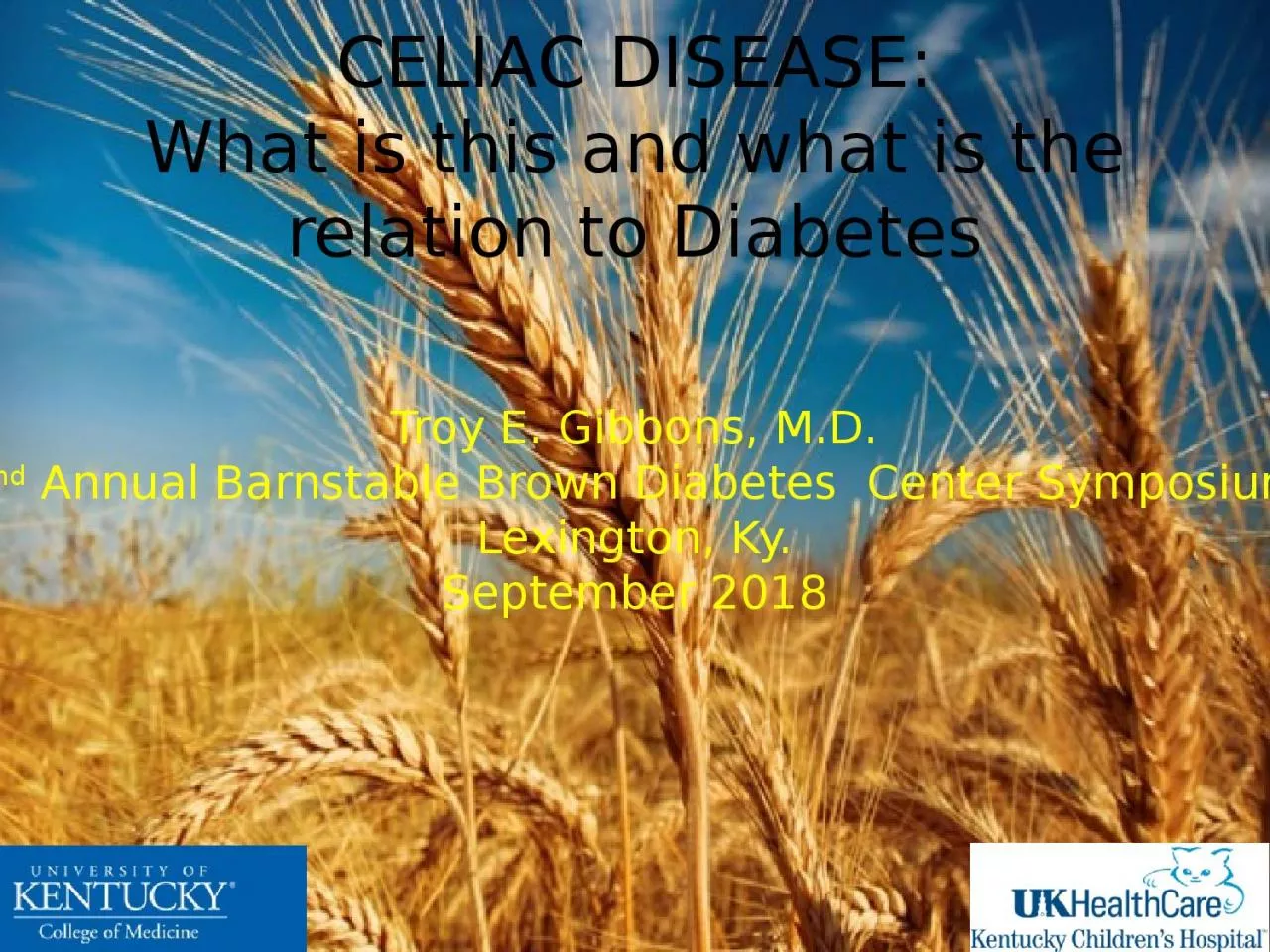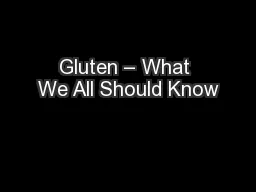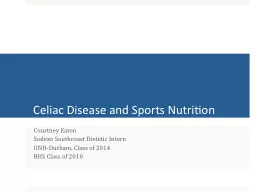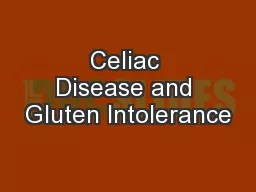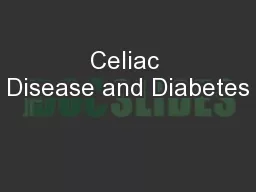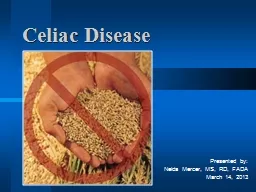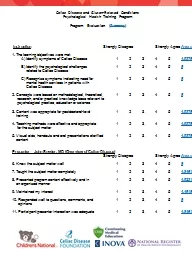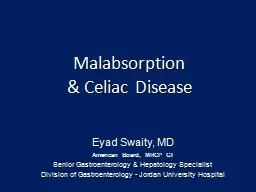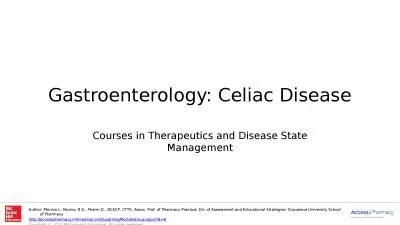PPT-CELIAC DISEASE: What is this and what is the relation to Diabetes
Author : cady | Published Date : 2024-01-29
Troy E Gibbons MD 2 nd Annual Barnstable Brown Diabetes Center Symposium Lexington Ky September 2018 CONFLICT OF INTEREST NOTHING TO DECLARE Objectives Upon completion
Presentation Embed Code
Download Presentation
Download Presentation The PPT/PDF document "CELIAC DISEASE: What is this and what is..." is the property of its rightful owner. Permission is granted to download and print the materials on this website for personal, non-commercial use only, and to display it on your personal computer provided you do not modify the materials and that you retain all copyright notices contained in the materials. By downloading content from our website, you accept the terms of this agreement.
CELIAC DISEASE: What is this and what is the relation to Diabetes: Transcript
Download Rules Of Document
"CELIAC DISEASE: What is this and what is the relation to Diabetes"The content belongs to its owner. You may download and print it for personal use, without modification, and keep all copyright notices. By downloading, you agree to these terms.
Related Documents

